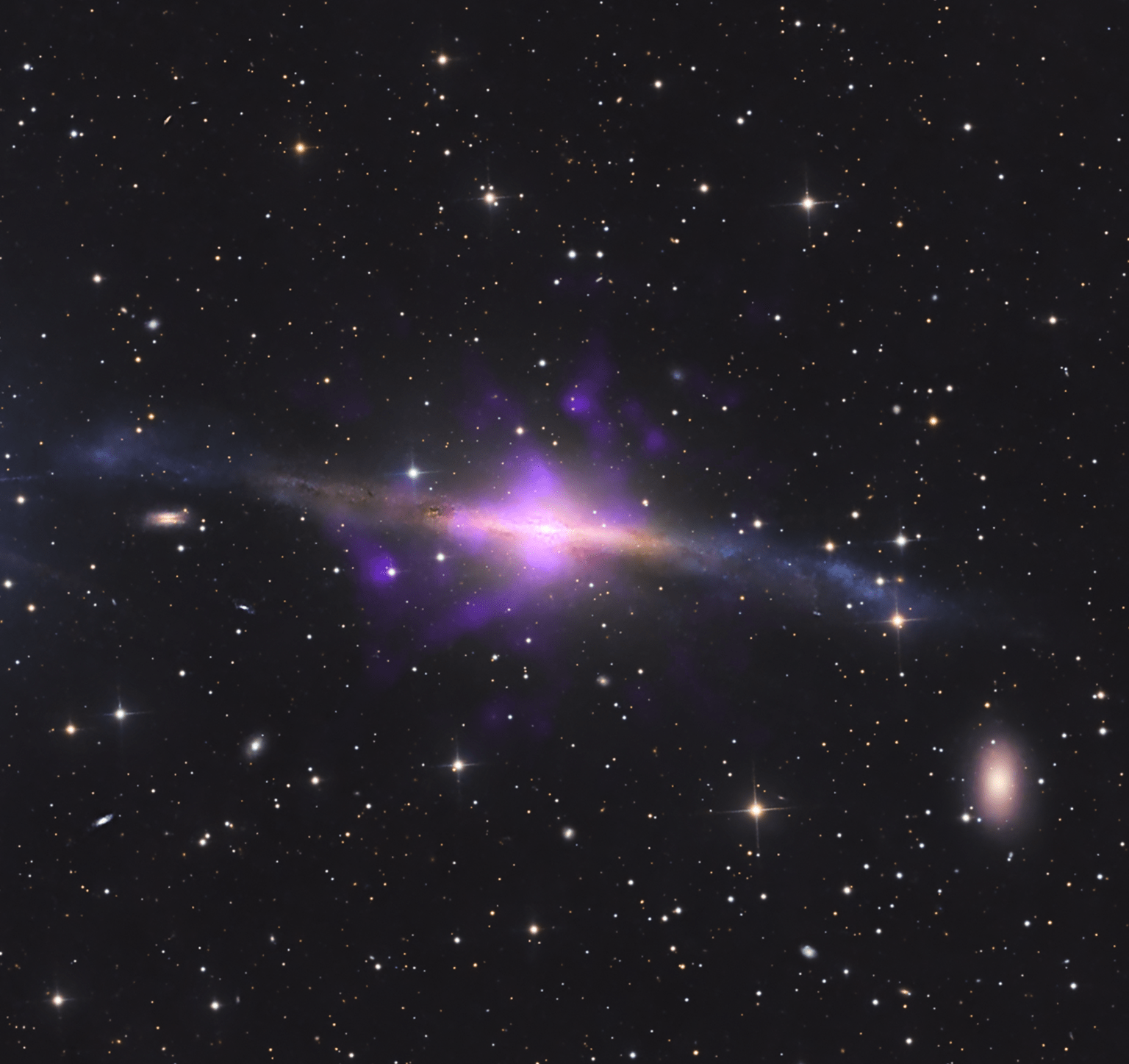
NASA researchers have discovered a perplexing case of a black hole that appears to be "tipped over," rotating in an unexpected direction relative to the galaxy surrounding it. That galaxy, called NGC 5084, has been known for years, but the sideways secret of its central black hole lay hidden in old data archives. The discovery was made possible by new image analysis techniques developed at NASA's Ames Research Center in California's Silicon Valley to take a fresh look at archival data from the agency's Chandra X-ray Observatory.
Using the new methods, astronomers at Ames unexpectedly found four long plumes of plasma - hot, charged gas - emanating from NGC 5084. One pair of plumes extends above and below the plane of the galaxy. A surprising second pair, forming an "X" shape with the first, lies in the galaxy plane itself. Hot gas plumes are not often spotted in galaxies, and typically only one or two are present.
The method revealing such unexpected characteristics for galaxy NGC 5084 was developed by Ames research scientist Alejandro Serrano Borlaff and colleagues to detect low-brightness X-ray emissions in data from the world's most powerful X-ray telescope. What they saw in the Chandra data seemed so strange that they immediately looked to confirm it, digging into the data archives of other telescopes and requesting new observations from two powerful ground-based observatories.

The surprising second set of plumes was a strong clue this galaxy housed a supermassive black hole, but there could have been other explanations. Archived data from NASA's Hubble Space Telescope and the Atacama Large Millimeter/submillimeter Array (ALMA) in Chile then revealed another quirk of NGC 5084: a small, dusty, inner disk turning about the center of the galaxy. This, too, suggested the presence of a black hole there, and, surprisingly, it rotates at a 90-degree angle to the rotation of the galaxy overall; the disk and black hole are, in a sense, lying on their sides.
The follow-up analyses of NGC 5084 allowed the researchers to examine the same galaxy using a broad swath of the electromagnetic spectrum - from visible light, seen by Hubble, to longer wavelengths observed by ALMA and the Expanded Very Large Array of the National Radio Astronomy Observatory near Socorro, New Mexico.
"It was like seeing a crime scene with multiple types of light," said Borlaff, who is also the first author on the paper reporting the discovery. "Putting all the pictures together revealed that NGC 5084 has changed a lot in its recent past."






